Designers and Their Cars - Automotive Patent Art Revisited

A Brooks Stevens concept.
Aaron Cole’s post about automotive patent art gladdened my heart. Years ago, I decided to check out some of Les Paul and Leo Fender’s original patents on their electric guitars and I discovered the artistry of patent drawings. These days the United States Patent and Trademark Office, as well as patent offices around the world, accept digitally produced artwork. However, before the digital age, an inventor had to hire someone skilled at technical drawing to produce the various exploded and see-through sketches needed to describe the “preferred embodiment” of a process patent.
Of course the “inventor” of a design patent — a slightly different form of intellectual property that protects the design and look of a product — is more often than not, the actual designer.
Following up on Aaron’s post, I decided to put the names of some notable automotive designers into a patent search engine to see what I could find. My hypothesis was that in the case of a design patent, particularly for a car, the artwork for the patent application was likely to have been drawn by the designer. A patent is a big deal to any engineer or designer and he’d likely want to be the one responsible for representing his own idea best.
Clare MacKichan’s Chevy Nomad
Yes, sometimes the boss takes credit for subordinates’ work. Harley Earl, General Motors’ first head of styling, was known not to draw very well. Designers and clay modelers working for him, though, said he had a masterful way of waving his hands that communicated well to the designers the vision he had in his mind’s eye. Car design is a collaborative process, involving people you work with and work for. Guys like Earl, his successor Bill Mitchell, or carrozzeria boss Nuccio Bertone had some justification in putting their names on patents, even if they only had supervisory roles.
Car body designed by Harley Earl in 1921 when he was still working for his father’s custom body shop in Los Angeles, before he was hired by Alfred Sloan to start GM’s styling department in 1927.
Next to lead designer Hank Haga’s name, the Chevrolet Aerovette patent carries Mitchell’s name along with that of senior designer Chuck Jordan (who succeeded Mitchell as head of GM Design) as well as GM designer Jerry Palmer. A similar situation exists with the current Mustang convertible, whose patent bears Ford design chief J Mays’ name along with those of designers Moray S. Callum, Joel Piaskowski, Darrell Behmer, and Kemal Curic.
A Ray Dietrich design.
I’m willing to guess that even if Earl, Mitchell or Mays didn’t render the patent drawings themselves, they assigned a senior designer with the task of their posterity, not some intern. Regardless of who did the actual drawings, they were very well executed.
Enjoy:
Eugene “Bob” Gregorie was Ford’s first head of styling.
One of Virgil Exner Sr’s Chrysler-Ghia show cars.
Harley Earl’s name is on this Cadillac design from the early 1950s.
This Motorama concept, called L’Universelle, was a front wheel drive passenger van designed by Chuck Jordan.
One of Ian Callum’s Jaguars
A more recent, digitally rendered Jaguar
Marcello Gandini’s Lamborghini Diablo
Giorgetto Giugiaro’s DeLorean DMC12, an update of an earlier design of his.
JB’s editors at R&T might think that Paul Bracq designed the BMW M1, but it’s Giugiaro’s name on the design patent. Bracq did the BMW Turbo, on which the M1 was based.
Aerovette.
Art Ross, who headed Cadillac and Oldsmobile’s studios, rendered the Golden Rocket Motorama car
Raymond Loewy coupe concept from the early 1960s.
One of Virgil Exner Sr’s last cars for Chrysler.
A Corvair concept by Larry Shinoda.
One of Bill Mitchell’s Corvette concepts, perhaps the Mako Shark.
Camilo Pardo’s Ford GT
The current Ford Mustang
Ronnie Schreiber edits Cars In Depth, a realistic perspective on cars & car culture and the original 3D car site. If you found this post worthwhile, you can get a parallax view at Cars In Depth. If the 3D thing freaks you out, don’t worry, all the photo and video players in use at the site have mono options. Thanks for reading – RJS

Ronnie Schreiber edits Cars In Depth, the original 3D car site.
More by Ronnie Schreiber
Latest Car Reviews
Read moreLatest Product Reviews
Read moreRecent Comments
- Bd2 Ultimately, it comes down to price/whether it makes financial sense for buyers (right now, BEVs just aren't there, even with the tax credit). HEVs are finally seeing their place in the sun, decades after being a niche market; this is due to premium for HEVs having narrowed significantly with pure ICE, whereby buyers can recoup that after 2-3 years of ownership.
- MaintenanceCosts I've experienced three cars that were the first year of the model. The two I bought (first-off-the-boat 2004 TSX and midyear 2006 Civic) were both Hondas and were both flawless. The other one was my ex-stepmother's 1990 Land Rover Discovery. It was one of the very first Euro-spec models, a two-door with an asthmatic carbureted 3.5L V8 and a five-speed manual. Every part of the car broke at some point, including things like hatch hinges that really shouldn't break. It turned her off Land Rover forever, and her cars since have all been Subarus.
- MaintenanceCosts When I was living with my Bolt in a rental condo and charging from 120V in the garage, as soon as the association figured out what was happening, they asked me to pay $30 a month to cover the cost. That's pretty close to what I was using so I had no issue with it.
- SCE to AUX I've had mixed results with first-year cars:71 Pinto - good. 85 LeBron GTS - good. 96 Grand Voyager - good. 02 Passat B5.5 - bad. 05 Odyssey - bad. I also had a last-year car that was terrible (80 Bobcat), but most cars were crap then, anyway.
- Crown Go big or go home. Never understood the "economy version" that manufacturers make of a performance car.




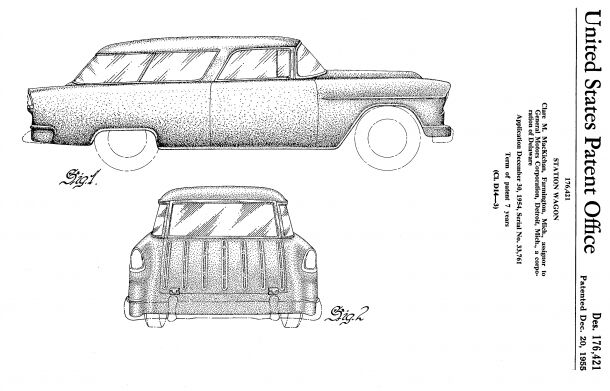







































































































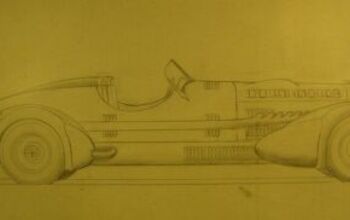




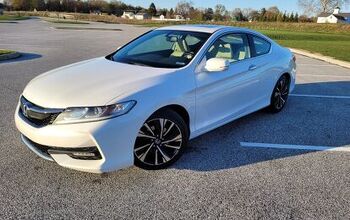


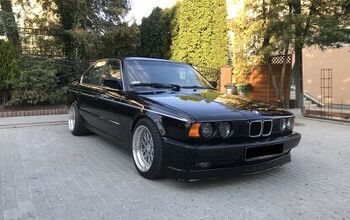




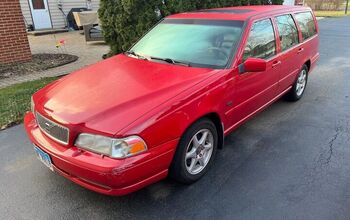

Comments
Join the conversation
Very interesting article. What you should know is that it is highly unlikely that any of the aforementioned auto designers actually penned these patent drawings. Note that the US Patent and Trademark Office has very stringent requirements regarding drawings ( https://www.law.cornell.edu/cfr/text/37/1.84 ), and that it's likely that the designer couldn't be bothered to familiarize himself with such requirements and prepare a set of PTO-compliant drawings, in addition to the drawings required by his boss(es). Peace Out, ChiefPontiaxe, registered patent attorney.
Note that when an element is shown in hatched/phantom lines, it means that that element does not form part of the invention, which is why most auto design patents show the wheels in hatched/phantom lines. Otherwise, the patentee would be limited to the vehicle/wheel combination shown in the design patent, and making it easier for an accused infringer to avoid infringement by changing the wheels of the accused vehicle.